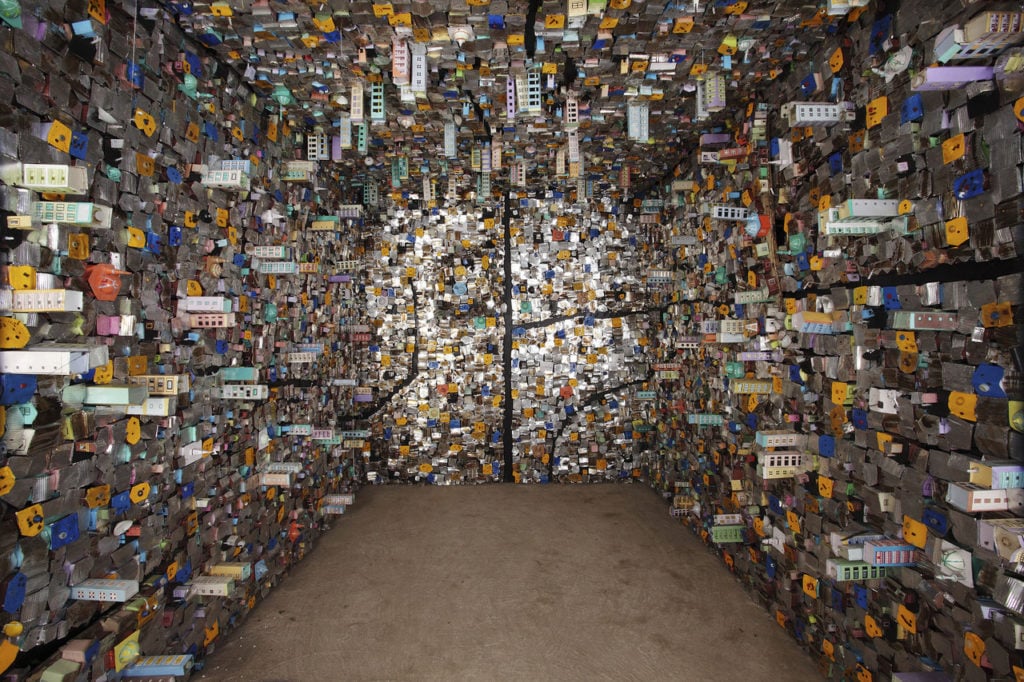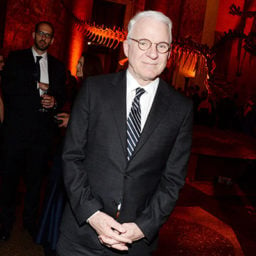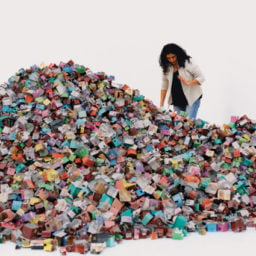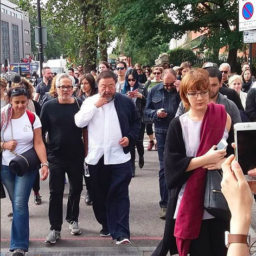A delicate, hazy cloud hovers in the corner, an amorphous mass of indeterminate multi-colored material. The artwork is by Aaditi Joshi, and it’s crafted from thousands of plastic bags, found on the streets of Mumbai, where she lives. The sheer mass of discarded bags poses a significant environmental threat to India, but Joshi still draws inspiration from the trash that chokes the crowded city streets. In this, she is not alone.
The past half century has seen a dramatic increase in the Earth’s population, and nowhere has this trend been more pronounced than in Asia. The continent is now home to more megacities—those boasting populations above 10 million—than any other. The sheer scale of human activity in a rapidly changing landscape has created a key moment for the region’s artists, 11 of whom feature in the current exhibition, “Megacities Asia,” at the Museum of Fine Arts Boston (MFA).
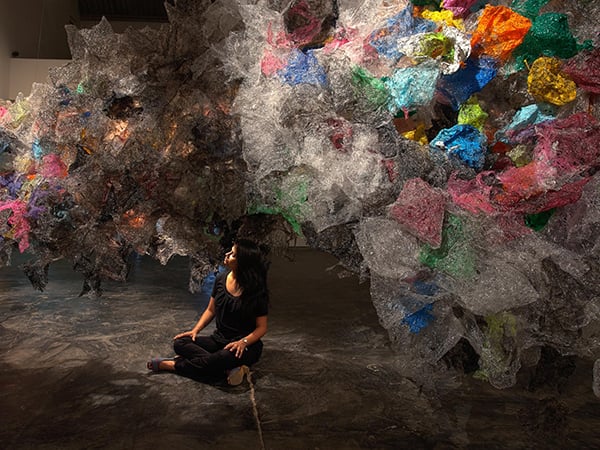
Aaditi Joshi, Untitled (2016).
Photo: David Desouza, courtesy Gallery Maskara.
Appropriately, the works on view are too large, sprawling, and numerous to be contained in a single gallery, or even the museum itself. In addition to a dedicated space in the institution’s Gund Gallery, “Megacities” scatters artwork from Beijing, Shanghai, Delhi, Mumbai, and Seoul throughout the museum, on the lawn in front of the main entrance, and even at Faneuil Hall, over two and a half miles away.
Each artist in the show is responding to specific conditions to life in their cities, and to the objects they encounter everyday. “I want people to see how the trash is inspiring me, and the kind of a beauty I see in this trash around me,” explained Joshi, who transforms the bags by gently heating them and fusing them together, in a video on the MFA website.
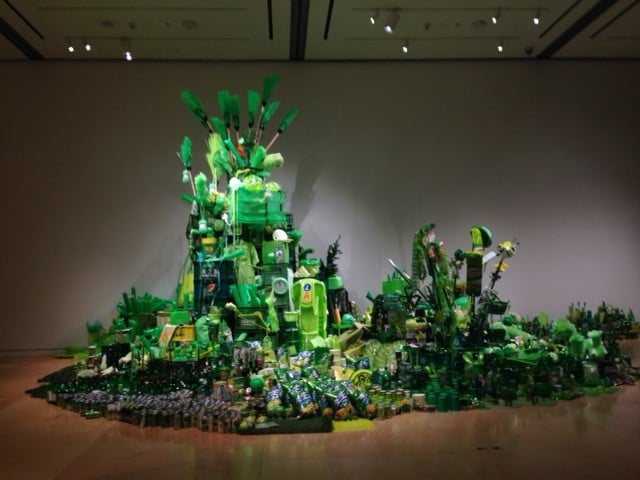
Han Seok Hyun, Super-Natural (2016).
Photo: Sarah Cascone.
Less transformative in his use of mass-produced plastic is Han Seok Hyun. The South Korean artist scoured convenience stories and supermarkets for green plastic objects, which he has piled high in a striking installation titled Super-Natural. As the profusion of beer bottles and cleaning supplies make clear, “green” doesn’t necessarily mean healthy, natural, or environmentally friendly.
South Korea’s Choi Jeong Hwa also works with plastic, but to a totally different effect. By pairing boldly-colored plastic bowls and stringing them together on steel armatures, like giant beads, Choi creates fabulous blinged-out sculptures, lit from within by LEDs. These hang between ionic columns on the second floor of the rotunda near the museum’s Fenway entrance.
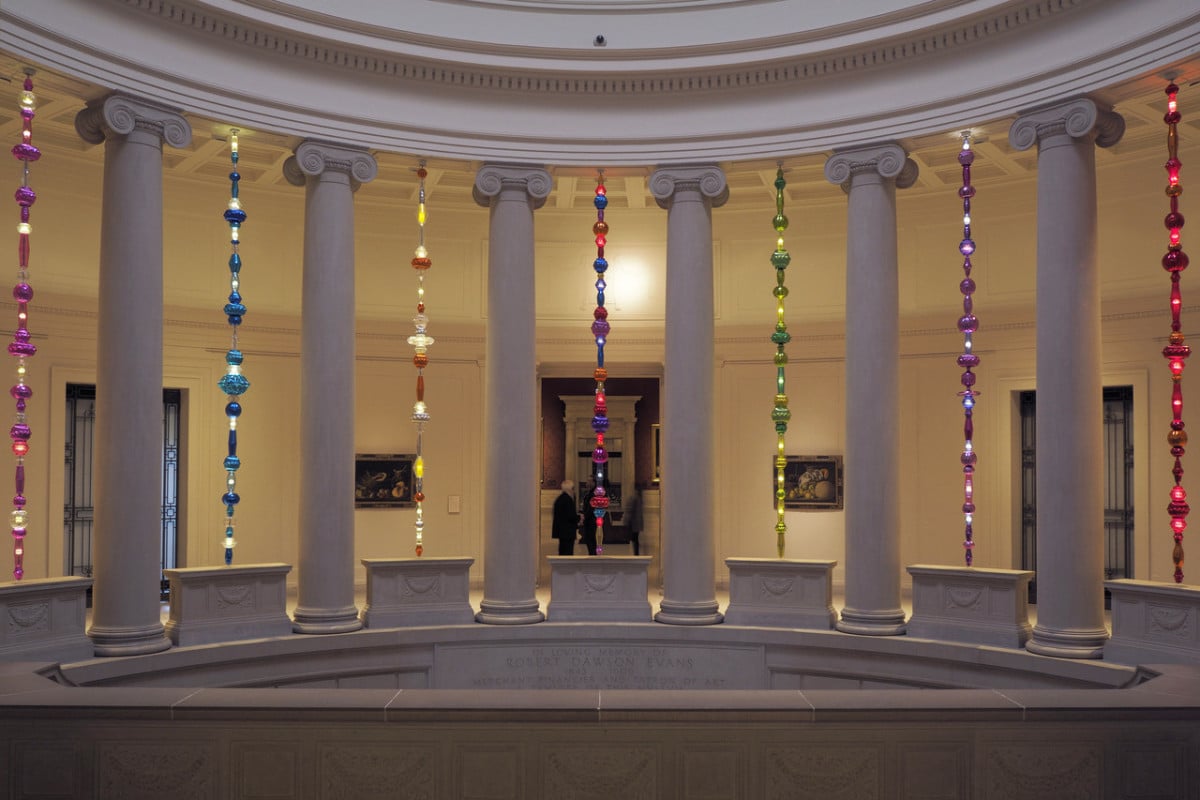
Choi Jeong Hwa, Alchemy (2016).
Photo: © Choi Jeong Hwa, courtesy Park Ryu Sook Gallery/Museum of Fine Arts, Boston.
Hidden away in a tiny back room in the museum’s Asian art galleries is Choi’s second work. Chaosmos is stunning, shimmering, kaleidoscope of a mandala created from a massive, technicolor plastic chandelier slowly rotating amid the Mylar-coated walls, ceiling, and floor. An ornate plush and gilded chair in front of the installation offers ample selfie opportunities.
A third piece, Breathing Flower, an inflatable red lotus blossom that transforms a traditional Asian symbol into a motorized contraption, sits outside, while the inflatable Fruit Tree is offsite at Faneuil Hall.

The author poses with Choi Jeong Hwa’s Chaosmos at “Megacities Asia” at the Museum of Fine Arts, Boston.
Photo: Nathan Monroe-Yavneh.
“He thinks that the key concept in all of the objects in Megacities is all about accumulation,” explained Choi through an interpreter, the MFA’s Hee Jung Lee, in an interview with Boston NPR affiliate WBUR.
By far the most famous participant in the exhibition is China’s dissident artist Ai Weiwei, who contributes two works: Snake Ceiling, which uses children’s backpacks to protest the 5,000 who died due to shoddy construction techniques in schools during the 2008 Sichuan earthquake, and Forever, which features 64 interlocking bicycles that are stacked into a ring. The piece is a reference to the growing preference for cars rather than bikes in Beijing.
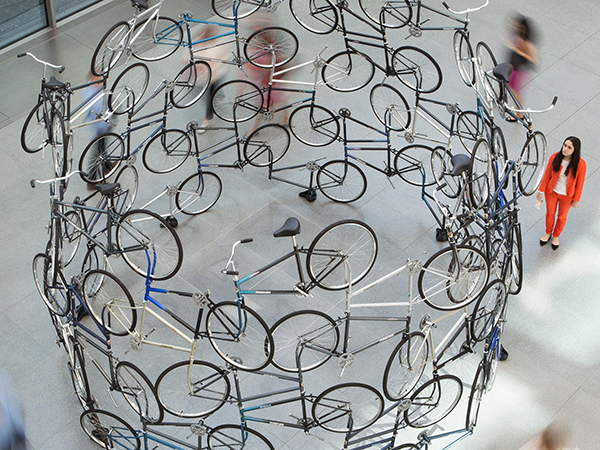
Ai Weiwei, Forever (2003).
Photo: Chuck Choi, courtesy the Ella Fontanals-Cisneros Collection.
The exhibition’s highlights include several immersive environments, from an interactive, vibrating, buzzing bamboo shack by Dehli’s Asim Waqif to a maze of antique Ming and Qin dynasty doors cobbled together into a Frankensteinian-architectural construct by China’s Hu Xiangcheng.
Visitors can also step inside Hema Upadhyay‘s 8 x 12, a square-shaped container with interior walls that have been transformed into a miniature cityscape of Dharavi, one Mumbai’s biggest slums, crafted here from scrap metal, found objects, and resin, which also serves as a touching tribute to the artist, who was brutally murdered in December 2015.
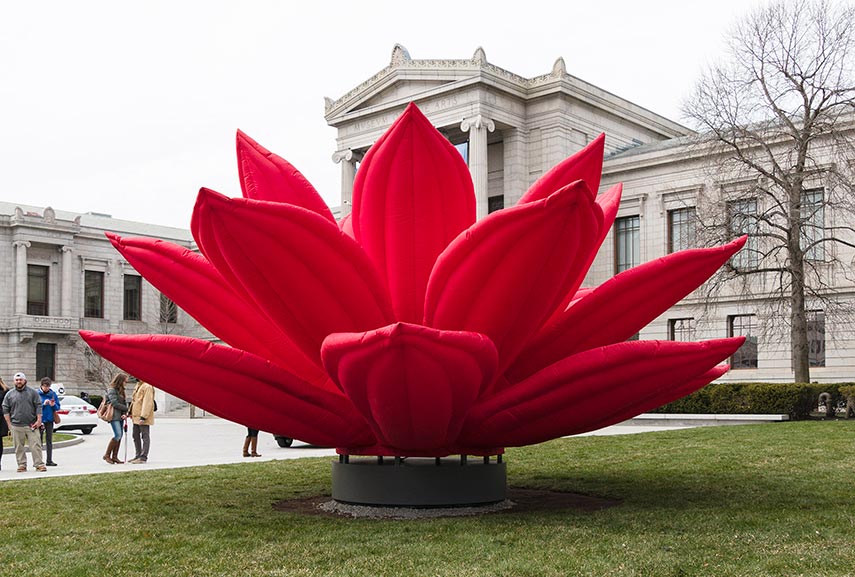
Choi Jeong Hwa, Breathing Flower (2016).
Photo: © Choi Jeong Hwa, courtesy Park Ryu Sook Gallery/Museum of Fine Arts, Boston.
The vibrant, visually-engaging exhibition is decidedly upbeat overall, reflecting the fast-paced life in Asia’s biggest megalopolises. While the cultural and environmental challenges of such places are real, they also offer an unprecedented level of artistic inspiration, a dichotomy that is very much a part of this dynamic show.
“Megacities Asia” is on view at the Museum of Fine Arts Boston, April 3–July 17, 2016.
